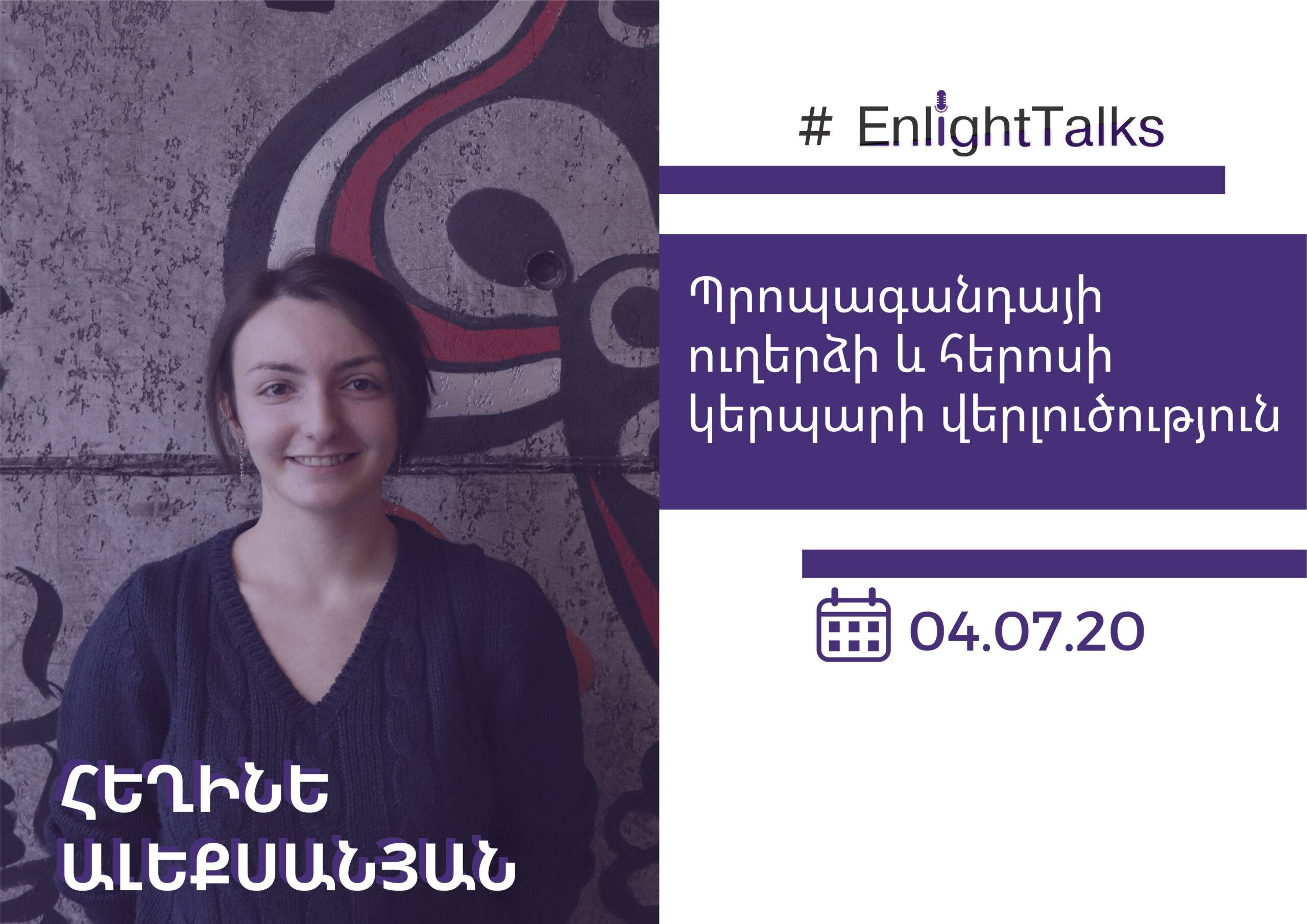#EnlightTalks series within the framework of “Enlight” three-month analytical internship program.
On July 4, within the framework of analytical practice, the speech of “Enlight” analyst, public administration specialist Heghine Aleksanyan took place on the topic of “Analysis of the propaganda message and the image of the hero.”
First, Heghine mentioned that her choice of the topic is conditioned by the fact that the latter provides a vast opportunity to develop analytical skills and tools.
Before the main speech, with the help of an online tool, the participants presented their associations of the word “propaganda,” such as manipulation, advertisement, etc. Then they tried to understand which of the three posters presented by the speaker or how many of them were examples of propaganda, in their opinion?
Talking about propaganda definitions, the speaker noted that those are very different, and change over the years. She presented Garth Jowett and Victoria O’Donnell’s definition, according to which: “Propaganda is the deliberate, systematic attempt to shape perceptions, manipulate cognitions, and direct behavior to achieve a response that furthers the desired intent of the propagandist.”
She also added that there are two misconceptions about propaganda: some think it is a purely historical phenomenon while according to the second approach, on the contrary, propaganda is connected with a new, informative era; there are associations with advertising, political technologies, and other similar phenomena. The speaker emphasized that propaganda is both a historical and modern phenomenon.
Referring to the question of how propaganda works, the speaker mentioned the main characteristics of propaganda. She also presented the factors ensuring the effectiveness of propaganda, manipulation techniques, the main steps of the analysis of the propaganda message;and, through them, the analysis of several propagandistic posters.
Returning to the question represented at the beginning of the meeting, the speaker discussed with the participants which of the presented posters are examples of propaganda. Using the information that participants received during the speech, they were able to find examples of propaganda in the presented posters.
At the end, the speaker answered the questions. Participants received two assignments. First, to choose and analyze the presented posters, exploring the message of the poster, main techniques used and the target group. Second, choose one of the two German films from the period of the First World War (“All Quiet on the Western Front” and “The Red Baron”) and answer the questions posed by the speaker(How are the heroism and the war presented in the film? bring examples of quotes or episodes expressing the change of the idea of heroism for the protagonist;Who is the target group of the film? Is it a film intended for a popular/large audience or not?)
Prepared by Narine Galoyan
For more comprehensive acquaintance, we suggest reading Heghine Aleksanyan’s article “Propaganda as a” language” of communication”.
You can get acquainted with Heghine Aleksanyan’s analytical articles by following this link.
Translator: Marieta Stepanyan © All rights reserved.









